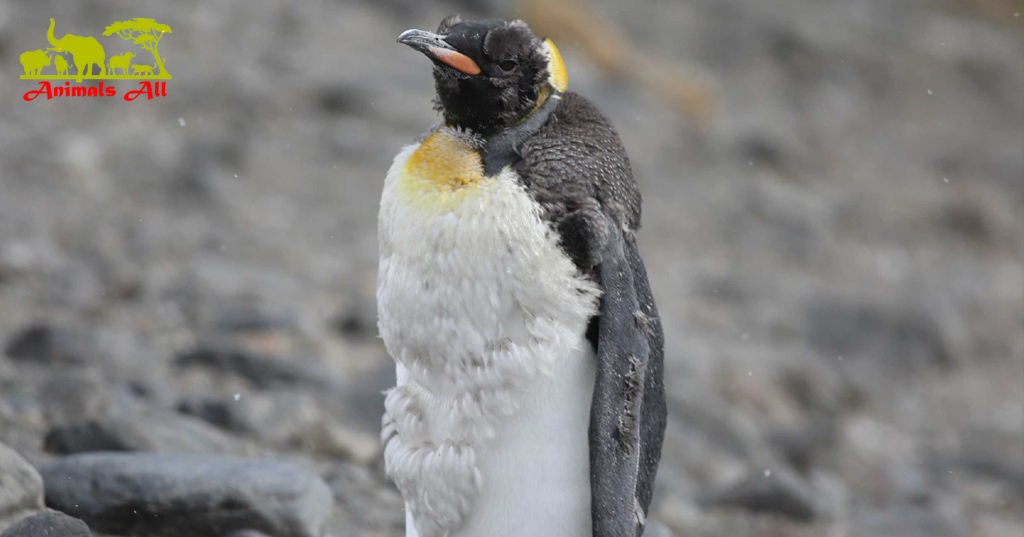
Haven’t you seen penguins molting?” (Tsundere face)
Before we begin the article, we turn our attention to a sea lion from South Georgia Island.
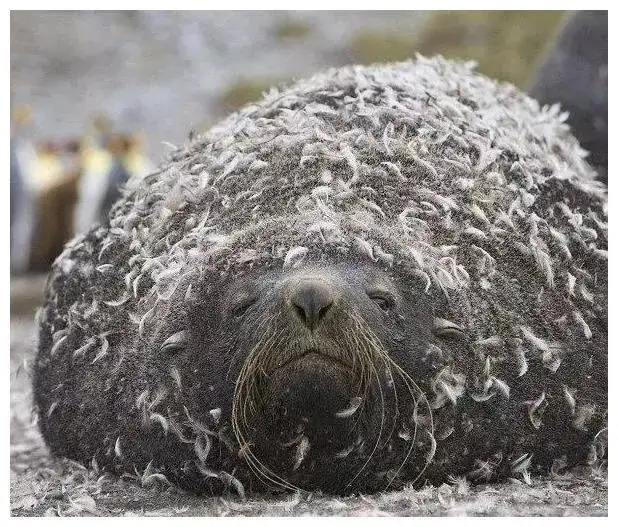
It seems unhappy, for a simple reason: it is covered with hair that does not belong to it. This land is the territory of king penguins , and it is the molting season for king penguins. The land is covered with winter fur. The sea lion rolled in the mud and was covered with white feathers, which made it look a bit embarrassed and funny.
Not only king penguins, but all penguins will shed their fur. This is an awkward period. When king penguins shed their fur when they are young, they look like kiwi fruit with half of its skin peeled off, while yellow-eyed penguins look like they are wearing a worn-out down jacket…
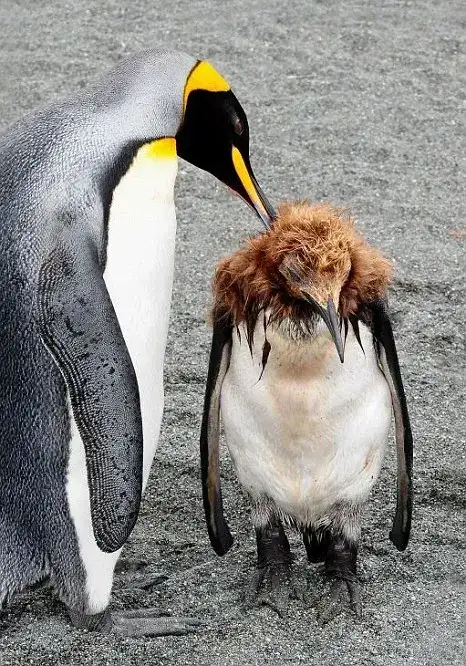
Moulting
The main reason for moulting is to keep warm and waterproof. Penguins live in cold environments, and the thermal insulation of feathers is essential for them to maintain their body temperature. Over time, old feathers gradually lose their thermal insulation and waterproofing properties. By moulting, penguins are able to renew their feathers, thereby ensuring that the new feathers have optimal thermal insulation and waterproofing properties, helping them maintain their body temperature in extremely cold environments.
During the molting process of Gentoo penguins, the synthesis of new feathers precedes the shedding of old feathers . Therefore, there will be a double layer of feathers in the early stage, which becomes super fluffy, equivalent to wearing two layers of sweaters at a time, which makes the penguins very hot.
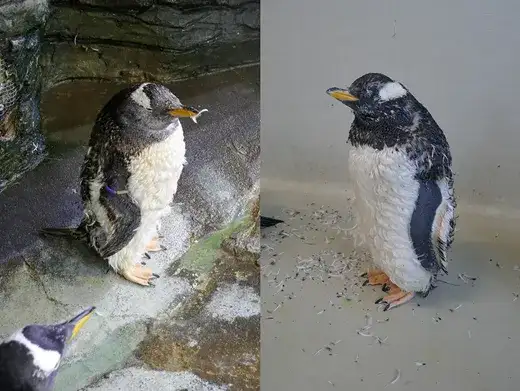
This is entirely possible because in the early stages of the molting of Gentoo penguins, when new feathers are growing and beginning to appear on the skin surface and the old feathers have not yet completely fallen off, the penguins will be in a high metabolic state to support the rapid growth of new feathers. At this time, the double layer of feathers can better block heat, and their own metabolism produces a lot of heat. The combination of high metabolism and high thermal insulation will naturally lead to the risk of overheating .
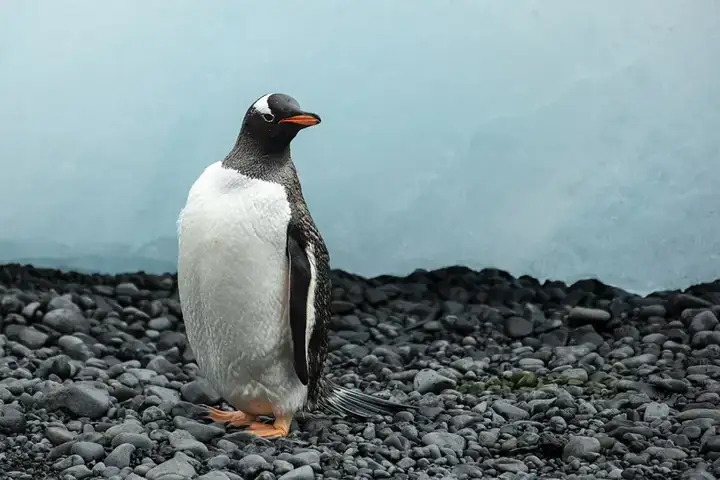
To verify this point of view, in late summer and early autumn of 2022, Agnès Lewden of the University of Brest in France came to the Aquarium in Brest and found 31 penguins for research.
Scientists
The scientists used thermal imaging cameras, which detect infrared radiation emitted by surfaces and convert it into temperature data, to measure the surface temperature of different parts of the penguins every morning, including the torso, around the eyes, beak, flippers and feet.
Firstly, the molting period of the Gentoo penguin is divided into 7 stages, and scientists affectionately call the “M2 stage” when they wear two layers of feathers in the early stages of molting the ” popcorn stage “.
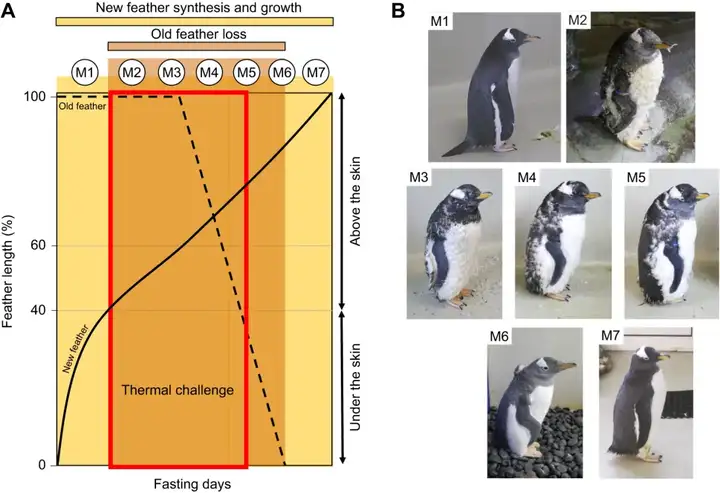
Using thermal imaging, scientists have figured out how surface temperatures change during the molting period of Gentoo penguins. The image below uses a color scale from 10°C to 32°C, with colors grading from blue (lower temperatures) to yellow (higher temperatures).
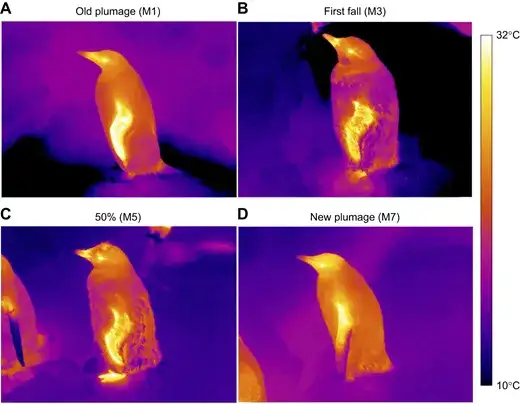
It can be clearly seen that the penguin in B has the lowest body surface temperature of all stages. It is in the first stage of shedding old feathers (M3), and more low-temperature colors (blue and purple) appear on the body surface, dropping from about 16 degrees Celsius to 15 degrees Celsius. This shows that the presence of double feathers increases thermal insulation, and wearing two sweaters is still very warm .
Penguin’s trunk temperature
At the same time, although the penguin’s trunk temperature is low, the area around the eyes is still very hot (very bright). Because the skin around the eyes is thin and rich in blood vessels, the temperature changes in this area can better reflect the penguin’s core body temperature. In other words, when the core body temperature rises, the temperature of the area around the eyes will also rise accordingly.
Through software calculations, scientists calculated that at M3, the temperature of the periocular area rose from about 30°C to 32°C, and remained at a high level in the middle stage (M3 to M5). The increase in periocular temperature may be a manifestation of penguins dissipating heat through the periocular area, which is also the reason why the feet, beaks and fins emit white light in thermal images.
In the old feather stage (M1), the thermal insulation of the Gentoo penguin is poor, and the heat escapes, and the surface temperature is high at this time. Therefore, the old feathers really do not keep the body warm, and it is necessary to molt. As the old feathers fall off and new feathers grow, the surface temperature of the trunk gradually rises, and finally returns to the initial level when the new feathers are fully grown (M7).
In the early stages of molting, Gentoo penguins are more warm when wearing two layers of sweaters, and their body temperature rises. Fortunately, the double-layer sweater is only on the trunk, and there is less hair around the eyes, mouth, fins and feet, which are equivalent to heat dissipation outlets. The increase in temperature in these areas helps penguins dissipate excess heat in the body through radiation and convection, thereby maintaining a stable core body temperature.
Gentoo penguins
Of course, Gentoo penguins have other ways of regulating their body temperature. Studies have shown that penguins regulate their body temperature by increasing peripheral blood flow during molting.
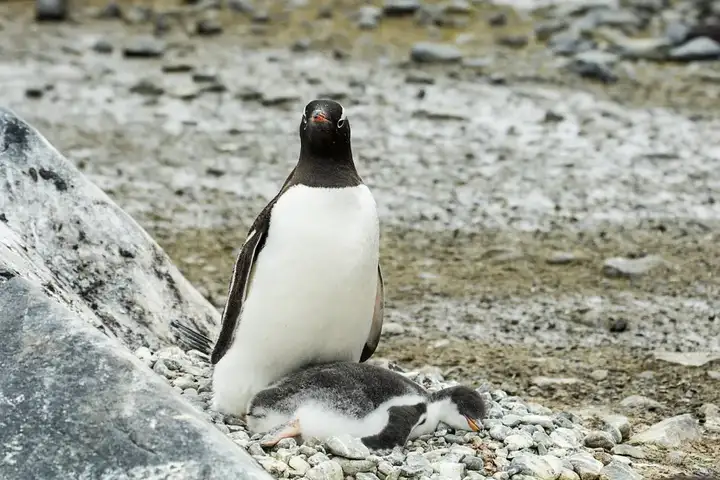
In the context of global warming, scientists are concerned that the double coat of the Gentoo penguin may increase its risk of heat stroke , as rising ambient temperatures may cause penguins to face greater heat stress during molting, requiring more heat dissipation mechanisms to regulate body temperature.
However, organisms always have a certain ability to adapt. A 2019 study on Gentoo penguins on the Antarctic Peninsula found that these penguins have expanded their distribution range and established new breeding colonies in new ice-free habitats under the background of climate change, indicating that Gentoo penguins are able to adapt to environmental changes to a certain extent.
Another study used DNA analysis to assess the impact of past climate change on Gentoo penguin populations and found that they have historically demonstrated strong adaptability. These results can help predict the potential impact of future climate change on penguin populations.
However, as climate change intensifies further, penguins will face greater uncertainty, and protecting their habitats and food supplies remains a vital measure.

